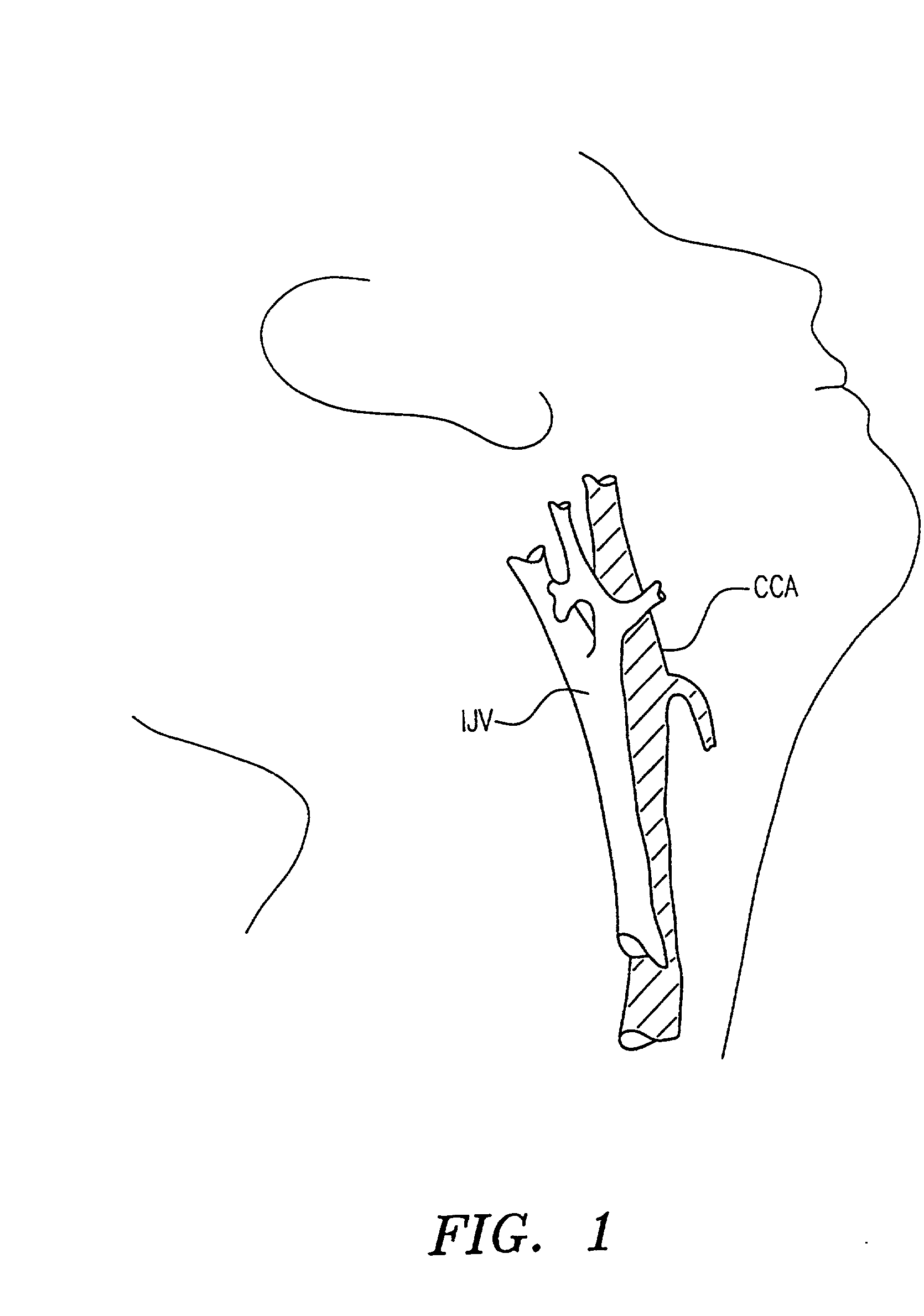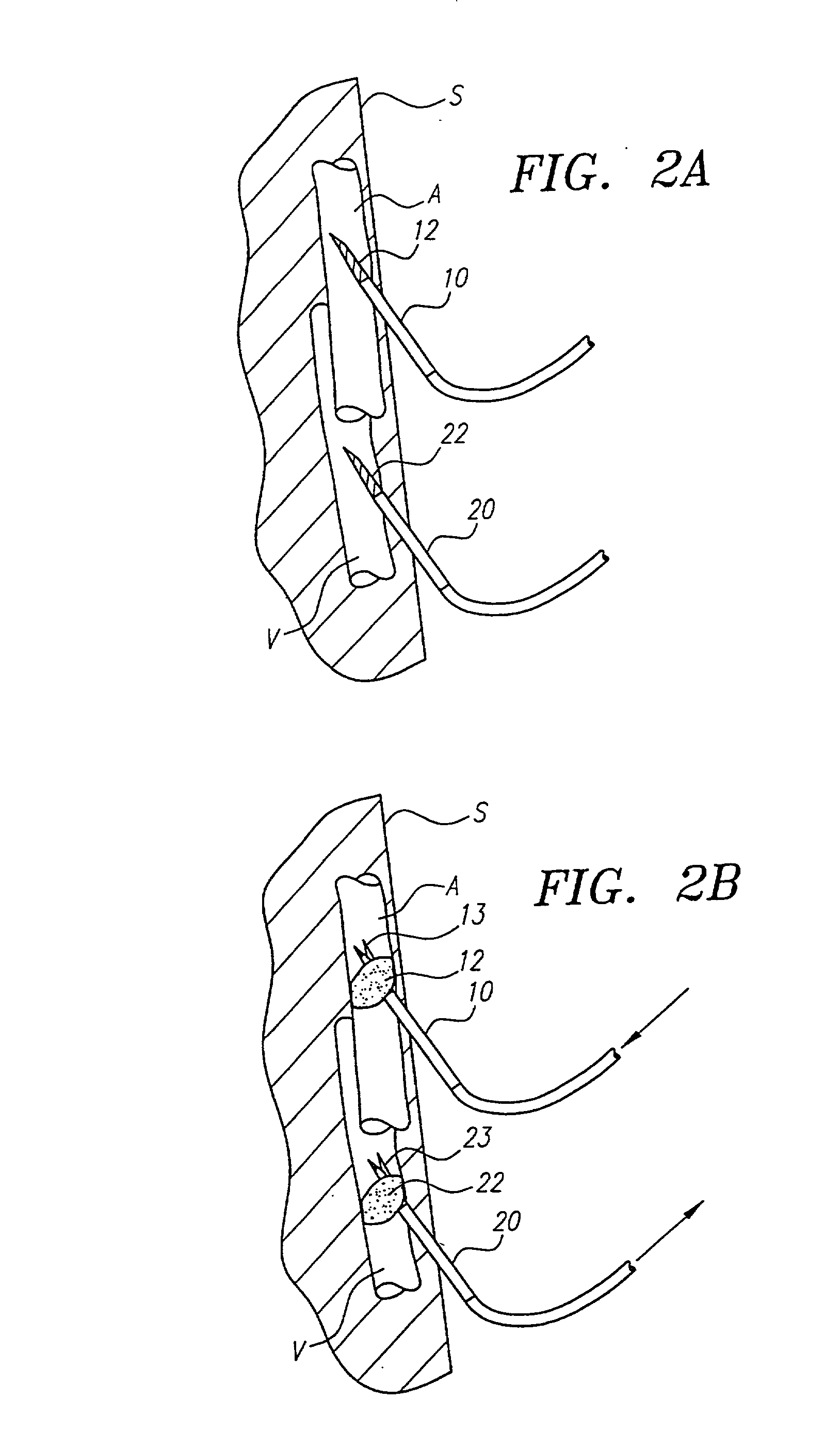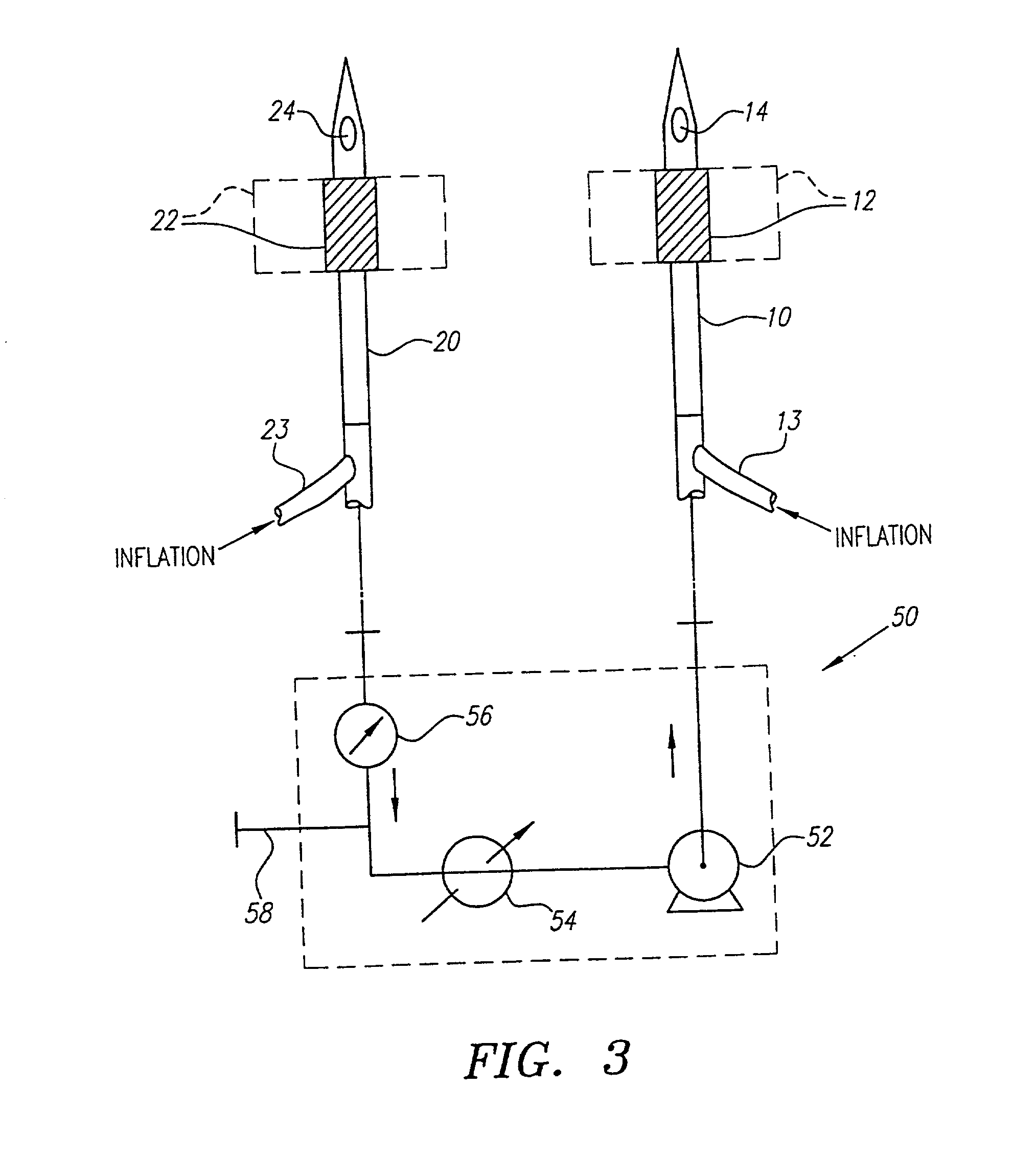Method and system for selective or isolated integrate cerebral perfusion and cooling
a technology of applied in the field of selective or isolated integration cerebral perfusion and cooling, can solve the problems of releasing significant amounts of atheromatous debris, avoiding such intravascular techniques, and the brain and cerebral vasculature are at the greatest risk of embolization and ischemia
- Summary
- Abstract
- Description
- Claims
- Application Information
AI Technical Summary
Benefits of technology
Problems solved by technology
Method used
Image
Examples
Embodiment Construction
[0053] The present invention provides methods, systems, and kits for perfusing the cerebral vasculature of a patient with an oxygenated medium. For the purposes of the present invention, the cerebral vasculature includes all arteries and veins leading into or from the patient's head, particularly including the common carotid arteries, the external and internal carotid arteries, and all smaller arteries which branch from the main arteries leading into the head. In some cases, particularly in open surgical procedures, access may be established in the aortic arch and innominate (brachycephalic trunk) artery as well. Cerebral veins include the external and internal jugular veins, the superior vena cava, and the smaller veins which feed into the primary veins draining the cerebral vasculature. Preferred access points should be at locations in the vasculature which permit relatively direct percutaneous introduction of a needle, cannula, or other access conduit through which the flow of ox...
PUM
 Login to View More
Login to View More Abstract
Description
Claims
Application Information
 Login to View More
Login to View More - R&D
- Intellectual Property
- Life Sciences
- Materials
- Tech Scout
- Unparalleled Data Quality
- Higher Quality Content
- 60% Fewer Hallucinations
Browse by: Latest US Patents, China's latest patents, Technical Efficacy Thesaurus, Application Domain, Technology Topic, Popular Technical Reports.
© 2025 PatSnap. All rights reserved.Legal|Privacy policy|Modern Slavery Act Transparency Statement|Sitemap|About US| Contact US: help@patsnap.com



